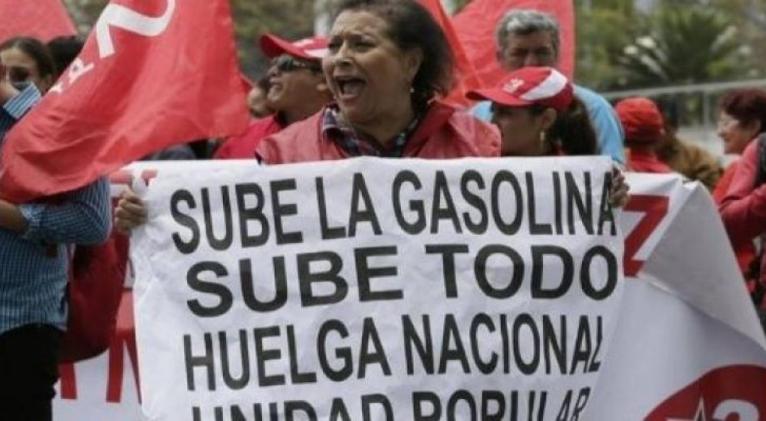Study shows nearly 300,000 Ecuadoreans to fall into poverty due to fuel price hikes

Quito, October 11 (RHC)-- A new study published by the Latin American Geopolitial Strategic Center (CELAG) estimates that nearly 300,000 Ecuadoreans -- around two percent of the population -- will fall into poverty as a direct result of President Lenin Moreno’s decision to eliminate the country’s fuel subsidies.
This comes as Ecuador's President announced last week the elimination of gasoline subsidies, tax and labor reforms, and other economic measures aimed at complying with the conditions of the loans granted by the International Monetary Fund (IMF).
In a televised speech on October 3rd, he stated that Executive Order 883 “liberates the price of diesel and extra gasoline," justifying his decision by saying that the Ecuadorean state allocates more than $1.3 billion a year in fuel subsidies.
A day later prices, increased by some 120 percent, as a gallon of gasoline went from $1.85 to $2.30 U$D. While diesel, used by most freight transport, increased from $1.03 to $2.27 a gallon. The increases in fuel prices will have a domino effect on all prices as transport costs will rise, which will likely be transferred to the consumer, thus increasing inflation rates while peoples' wages stay the same but loose purchasing power.
Based on projections, and taking into account other analyzes, inflation could be around five to six percent, as a result of the fuel price increase. Under this scenario, poverty would be 1.7 to two percent higher, which means between 296,000 and 340,000 people who would cross that poverty line.
“Cash transfers have been offered to lessen the detrimental effect. However, we must consider that as macroeconomic conditions deteriorate and the economy enters into recession, the more the density of people who approach the poverty line increases,” Nicolas Oliva, economist, and author of the analysis explained.
The statistical projection was based on data from the latest Employment and Unemployment Survey (December 2018) released by the Institute of Statistics and Census of Ecuador, in which the poverty line used for this estimate is US$84.75 per capita per month.
According to the official data, poverty in December reached 23 percent. So if inflation rose by only one percent, poverty would increase by 0.3 percent, representing 53,795 new poor. In the extreme case that inflation reaches ten percent, 576,000 would enter poverty.
“The poverty simulation does not incorporate any behavior in the demand or other variables, which makes it a partial equilibrium estimate. Despite this, it seems reliable, to the extent that Ecuador is an economy in recession and wages will not grow to compensate for the inflationary effect,” Oliva added.
On the issue regarding economists’ claims that fuel subsides actually benefitted the top tiers of society more than those at the bottom mainly based on an Inter-American Development Bank article, CELAG’s study used the same article from the IADB to point out that it recommends that “removing the diesel subsidy is regressive,” meaning it affects the majority.













Add new comment